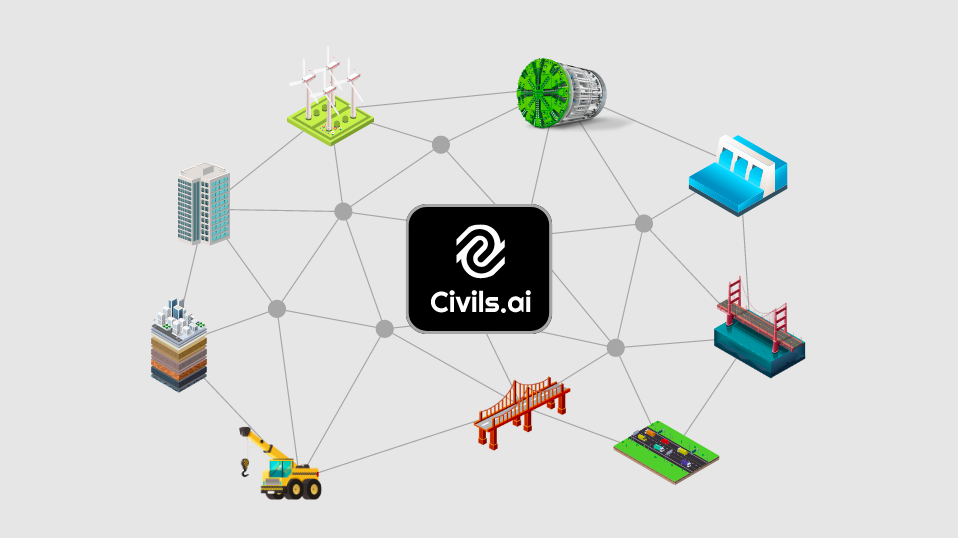
Former Arup engineer Stevan Lukic explains how new platform, Civils.ai, is using AI to generate answers about construction projects works.
ChatGPT might not be able (yet) to finish a building, but it could have the potential to make construction more efficient and quicker. That is at least the aim of Civils.ai: a tool developed by a team led by former Arup and Morgan Sindall civil engineer Stevan Lukic that uses a large language model (LLM) to generate answers tailored to construction projects.
LLMs are a type of AI algorithm that use deep learning techniques and huge amounts of datasets to understand and generate new content. The most well-known example of a LLM is ChatGPT.
Lukic and his colleagues launched the tool in January 2022 and Aecom, Mott MacDonald and Stantec are currently using the product. The platform has generated great interest in south-east Asia, where Lukic is based and he says major contractors in the UK are also considering it.
Civils.ai works by users uploading datasets such as site reports, contracts or design codes, that the AI processes to generate answers to specific questions posed by users relating to their project. Each of the documents uploaded to the system can be up to 2,000 pages long.
BIMplus: How is Civils.ai different from ChatGPT?

‘It saves a lot of time from going through lengthy reports to find the exact information you need. The AI does it for you’
Stevan Lukic: Cilvis.ai uses LLM GPT-3.5, which is the same technology that powers ChatGPT. Because these AI models are trained on billions of different datasets, LLMs are very good at predicting the next word in a sentence.
The key difference between ChatGPT and what we have developed at Civils.ai is that we allow some fine-tuning of the responses you get to specific cases for your construction and engineering projects. Our application allows you to upload construction reports and data from projects that we turn into a format that the LLM can understand.
Who has developed Civils.ai?
The tool has been developed internally. We are a group of three founding members, including myself, a former civil engineer, and two colleagues from the AI and tech world, Mirko Vairo and Julianna Xoe Widlund. I was very lucky to find them.
We’ve been working together on Civils.ai since a year and a half ago. We actually started working on it before ChatGPT became a hot topic. The situation has changed a lot since then and many more people are interested in AI applications in the construction sector today.
What data quality checks have you introduced to ensure that the chatbot generates accurate answers?
The technology is only as good as the different reports and data being fed in. When a user uploads a report or a document to the platform, we convert it into what’s called AI embedding. This means that we turn all of the content in the report into maps and information that a computer understands and can search through.
For example, let’s say you have a 2,000-page report. Essentially, we turn all that information into a math problem. Our software basically searches through and finds the sections that most accurately answer your questions. The more data you add, the more accurate the predictions become. If you only add a little bit of information, your answers will be restricted to that. However, if you add every single document from a project, the platform should be able to answer any questions you might have about it.

What happens if the data fed into the system is incorrect?
In terms of accuracy, in the AI world, there’s something that’s referred to as ‘hallucinations’. That happens when you ask one of these LLMs a question and the system comes back very confidently with an answer that’s completely wrong. That’s a big problem with LLMs.
To avoid the hallucination problem in Civils.ai, we only allow the software to answer questions on exactly what’s contained in the data that you have uploaded into the system. If the platform is not able to find the answer within that data, it will just tell you that it’s not available as it’s not contained in the reports.
But the ’garbage in, garbage out’ principle also applies here: if you are uploading incorrect data or deleting it, then you will get wrong answers back as the system won’t be able to differentiate it if the data input is incorrect.
Can you share an example of a question that a construction professional might ask the chatbot, and the answer they would receive?
The most common questions that users ask our platform are around summarising things like risks. For example: "Can you identify residual risks that haven’t been addressed in the design documents?" This helps to flag and highlight risks in the project.
Other popular questions include asking who is responsible for what in a project. Civils.ai would look into the contractual documents and find who is responsible for, let’s say, installing the windows or pipes of a building. The platform will tell you the name of the contractor and the individual responsible for it, so you can contact them. It saves a lot of time from going through lengthy reports to find the exact information you need. The AI does it for you.
Do you still require human checks in the system’s output?
It depends on the importance of the question, but I would definitely recommend doing human checks on the output. The answers provide a good place to start if you want a high-level understanding of something in your project.
Don’t miss out on BIM and digital construction news: sign up to receive the BIMplus newsletter.














